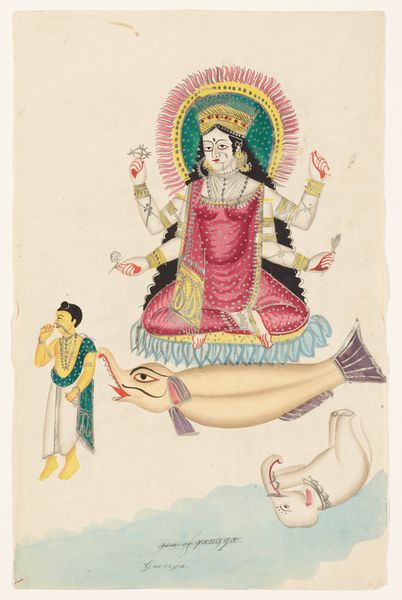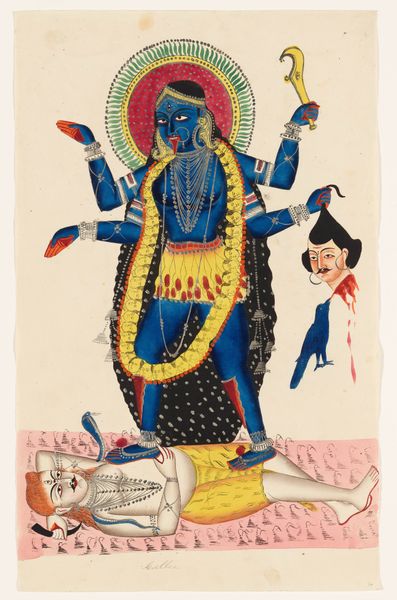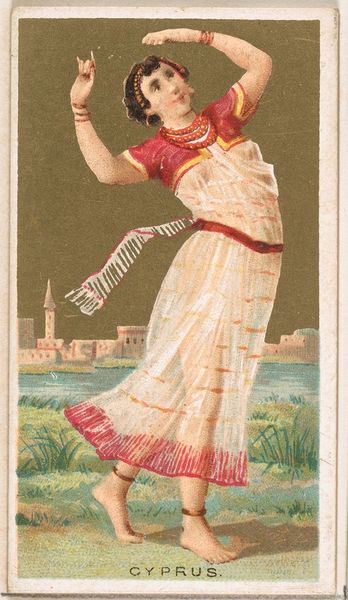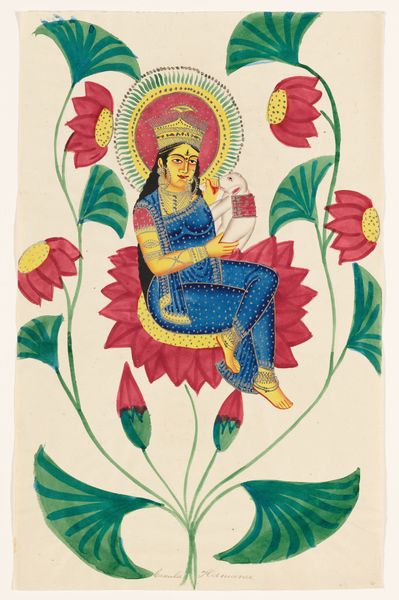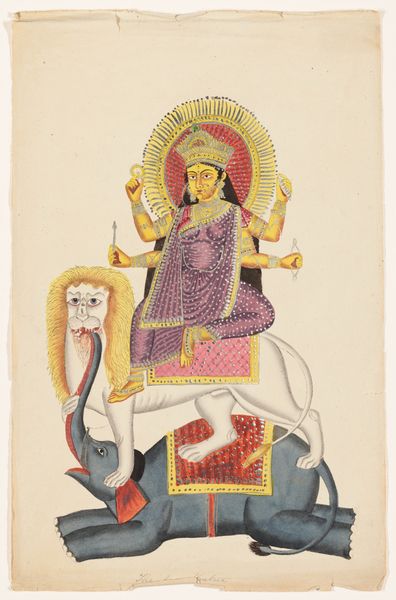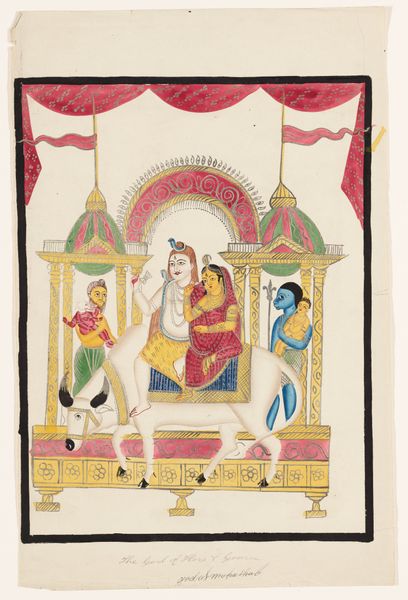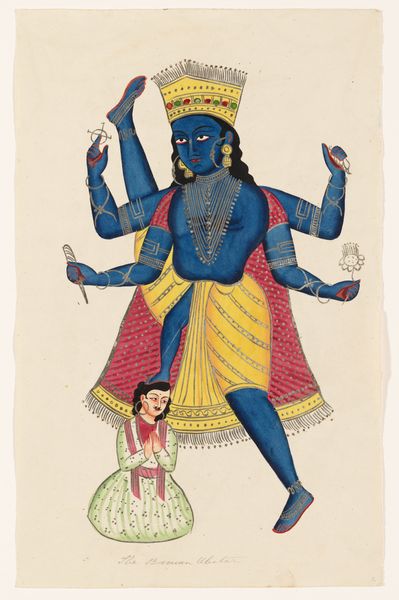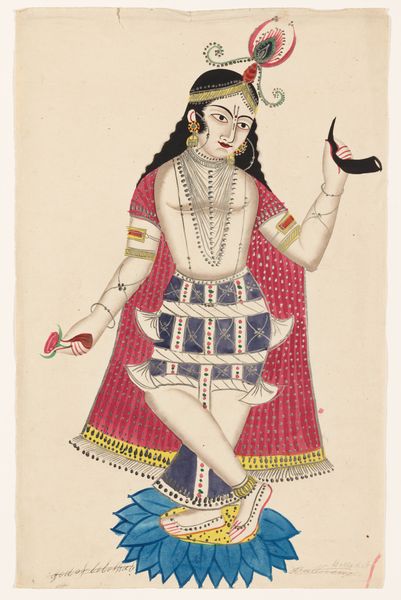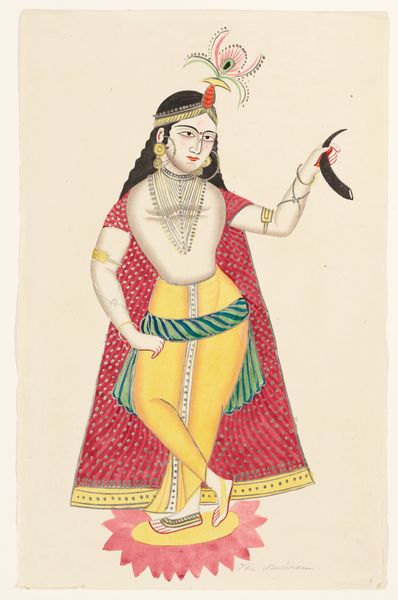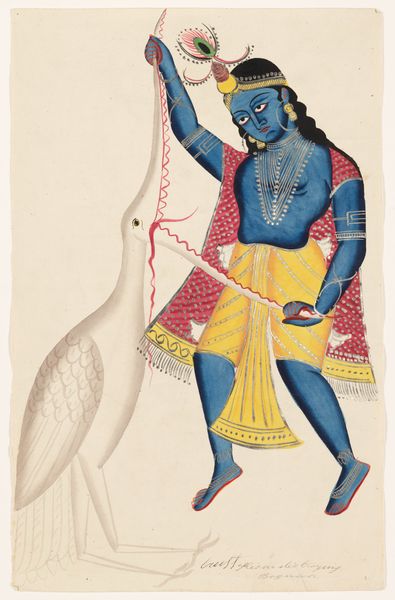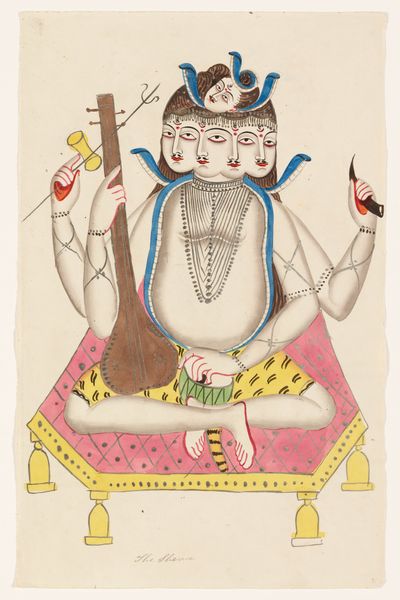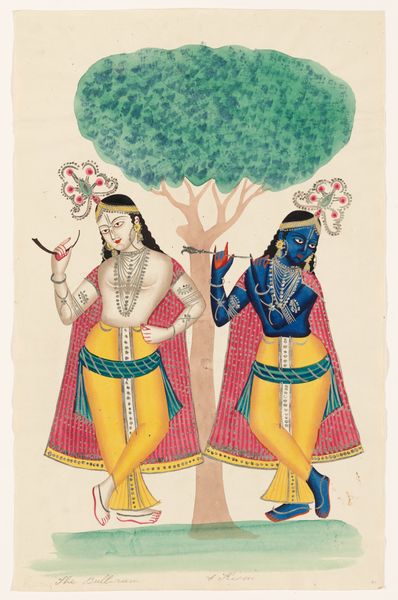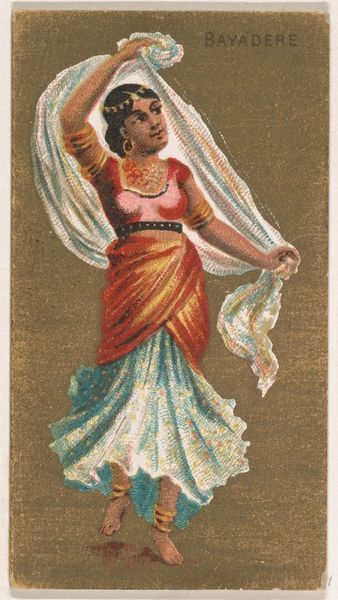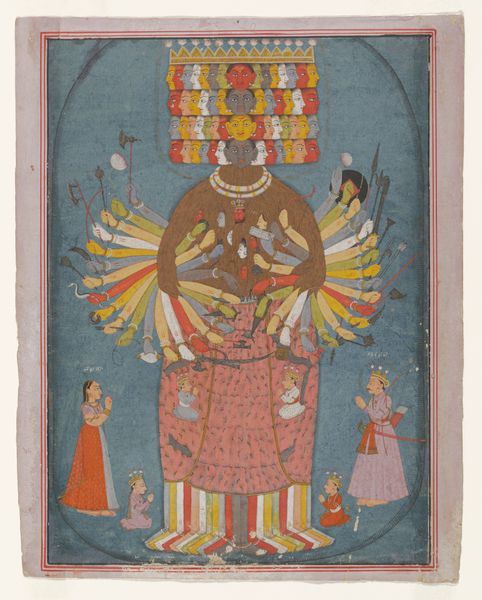
painting, print, watercolor
painting
asian-art
landscape
figuration
watercolor
orientalism
watercolour illustration
Dimensions: Sheet: 16 x 12 in. (40.7 x 30.5 cm)
Copyright: Public Domain
Curator: Look at this wonderful print, "Goddess Kamalatmika," created by The Hindu Art Studio between 1870 and 1895. It’s currently housed at the Metropolitan Museum of Art. Editor: It’s quite striking. There's a sense of vibrant color emanating from the scene, particularly the central figure and the lotus she sits on. The composition feels balanced, almost symmetrical. Curator: The goddess Kamalatmika is part of the Mahavidya goddesses, a complex aspect within Hinduism's Tantric tradition, a facet often overlooked in simpler understandings of the faith. This image reveals the evolving public representations and devotional practices in late 19th-century India. Editor: I’m immediately drawn to the details of how the image was made. The layering of watercolors on the paper creates a delicate texture. It’s a mass-produced print, and this hints at the burgeoning printmaking industry and the materials available at the time. These prints served to disseminate religious imagery beyond traditional circles. Curator: Exactly. These prints played a crucial role in shaping cultural imagination and visual culture. Consider the rise of printmaking alongside British colonialism, and how these images become forms of cultural assertion and economic exchange. The Hindu Art Studio skillfully catered to both local and international audiences. Editor: I wonder about the production line. Was it one artist meticulously painting each print, or a series of artisans contributing? The materiality tells us so much about the social and economic realities. I appreciate the blend of the sacred subject with commercial artistry. Curator: Indeed. It invites consideration on how cultural and religious meanings shift with new modes of production. What stories do you think the people encountering this image in their homes at the time were telling themselves? Editor: It’s that question that keeps me engaged. It bridges a tangible piece of paper, pigments, and printmaking with spiritual concepts, reminding me that even ethereal ideas are expressed through very real material conditions and labor. Curator: Absolutely. It’s an illustration of the complex intertwining of art, society, and belief. Editor: The blend of the sacred and the production process opens up endless avenues for consideration, don’t you think?
Comments
No comments
Be the first to comment and join the conversation on the ultimate creative platform.
